How To Plant Sunflower Seeds In Pots & Containers
To start the sunflower seeds, use a pot at least 12 inches in diameter. Sow the seeds 1 inch deep and place the pot in a well-lit sunny location after watering.
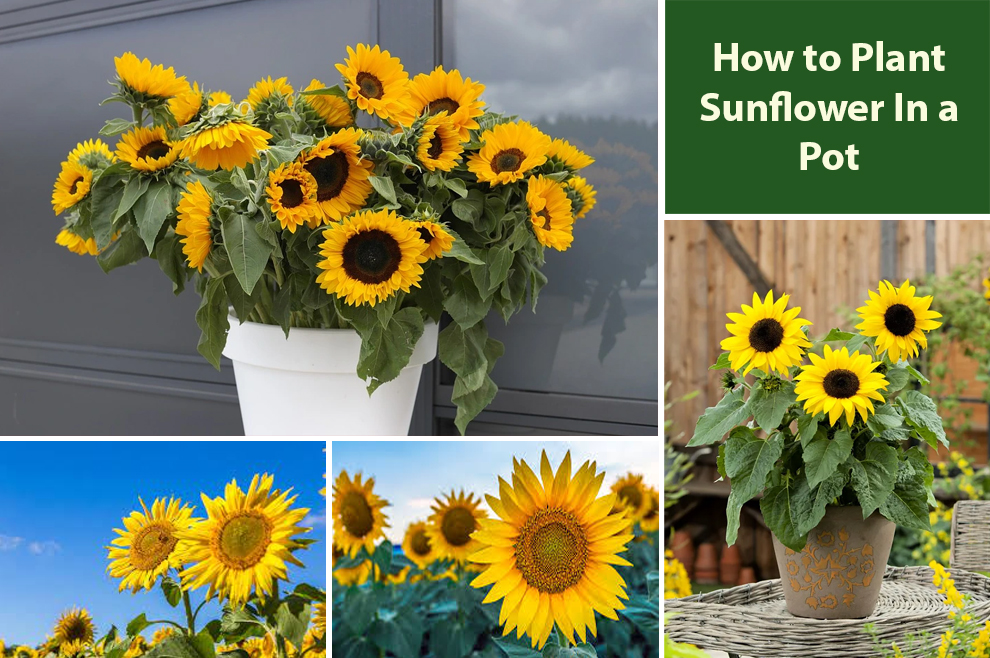
Growing sunflowers in pots is a fun and rewarding way to bring the beauty of these vibrant flowers into your home or outdoor space. With their tall stems and bright blooms, sunflowers are a great way to add a pop of color and visual interest to any area.
Whether you have a balcony, patio, or small garden, growing sunflowers in pots is a simple process that can be done with just a few basic steps.
If you don’t know how to grow sunflower in a pot, understand that selecting the right pot at least 12” in diameter is a must.
Further, choose a preferable sunflower variety and plant its seed around 1” deep in well-draining, organically rich soil.
Now, water thoroughly and place the pot in a location with 6-8 hours of sun.
Let’s look at what’s more to this.
Do Sunflowers Grow Well In Pots?
Yes, sunflowers can grow well in pots, provided that the pots are large enough to accommodate their growth and the necessary growing conditions are met.
How To Plant Sunflower Seeds In Pots?
Growing sunflower from seeds is extremely easy as these plants are heat and pest resistant. They are fast growers but do not rely on heavy feeding.
Here is a step-by-step walk through on how to grow these yellow blooms from seeds.
- Select the right pot size for sunflowers: Select a pot or container that is at least 6 inches deep and 12 inches diameter. Make sure it has drainage holes at the bottom. Sunflowers have deep roots, so choose a pot that is large enough to accommodate their growth.
- Choose a sunny spot: Sunflowers require a lot of sunlight to grow, so choose a location in your garden that gets at least six hours of direct sunlight a day.
- Preferred soil by sunflowers: Sunflowers thrive in well-draining soil filled with rich in organic matter. If your soil lacks in nutrients, you may add organic plant food to make it better.
- Planting sunflowers seeds: You can plant sunflower seeds directly into the soil in late spring or early summer, after the last frost.
- Spacing the seeds to prevent overcrowding: When planting sunflower seeds in a pot, the seeds should be spaced apart by a distance of about 6 inches to allow enough room for each plant to grow and develop. This spacing will help to prevent overcrowding and competition for nutrients and water. However, if you are planting more than one seed in a pot, you can space them out a bit more to give each plant enough room to grow.
- Water them regularly: Sunflowers need regular watering to grow and thrive. Water the soil deeply once a week or more often if the weather is hot and dry.
- Provide support to sunflower plant: As sunflowers grow taller, they may need support to keep from falling over. You can stake the plants or use a trellis or other support structure to keep them upright.
- Sunflower fertilizers
You can fertilize sunflowers once or twice during the growing season with a balanced fertilizer. Follow the instructions on the package for the best results.
- Harvest the sunflower seeds: When the sunflowers start to droop and the backs of the flower heads turn brown, they are ready for harvest. Cut off the flower heads and hang them upside down in a dry, well-ventilated place to dry. Once the seeds are dry, you can remove them from the flower head and store them in an airtight container.
- Care for sunflower plants: Keep the soil moist but not waterlogged and fertilize the plants every 4-6 weeks with a balanced fertilizer.
With these simple steps, you can successfully grow sunflowers from seed and enjoy their beautiful flowers and delicious seeds.
Let us read about everything in detail in the next section.
Which Sunflower Varieties Grow Best In Pots?
If you are wondering how to grow sunflower in a pot, know that there are several varieties of sunflowers that grow well in pots. Here are some popular options:
- Dwarf sunflowers
- Teddy Bear sunflowers
- Lemon Queen sunflowers
- Evening Sun sunflowers
Should I Put Sunflower Seeds In Water Before Planting?
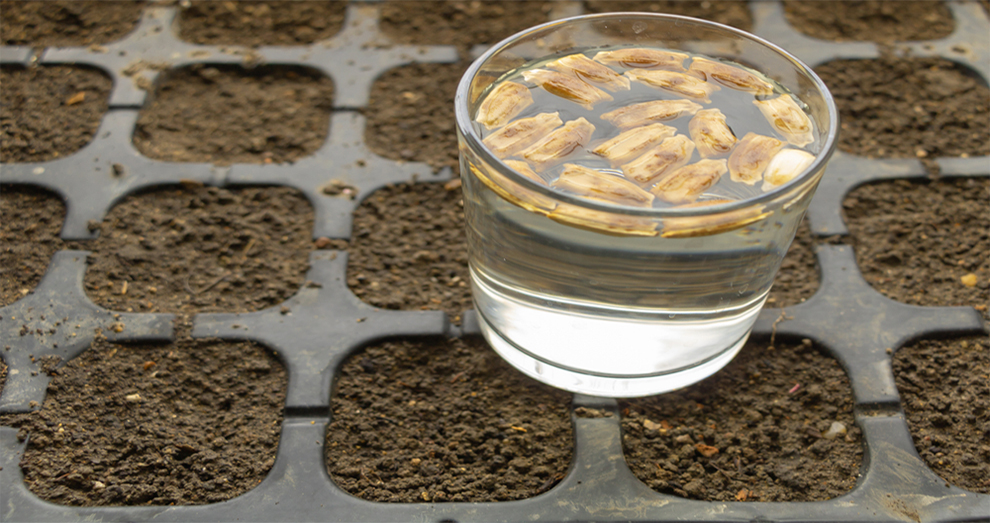
It is not necessary to soak sunflower seeds in water before planting, but it can be helpful in some cases. Soaking sunflower seeds can help to soften the outer seed coat, which may make it easier for the seed to germinate and sprout.
To soak sunflower seeds, place them in a bowl or jar and cover them with water. Let them soak for 4-6 hours or overnight. After soaking, drain the water and plant the seeds in the soil.
However, if you choose not to soak the seeds, it is still possible to get good results. Sunflower seeds are relatively easy to germinate, and they will often sprout without any special treatment.
How Many Sunflower Seeds Per Pot?
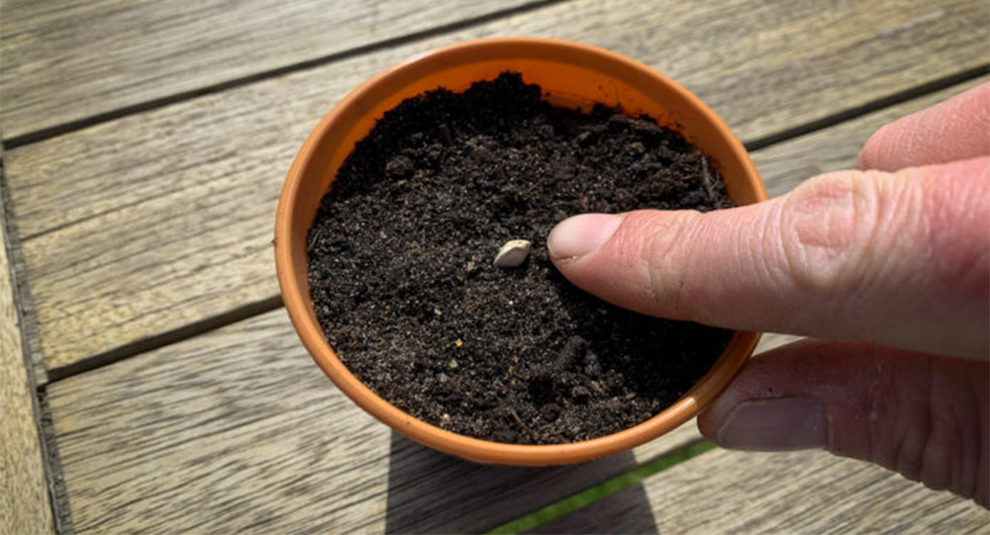
The number of sunflower seeds to plant in a pot will depend on the size of the pot and the variety of sunflower you are growing.
As a general guideline, you can plant one or two sunflower seeds per 6-inch pot, or up to four seeds per 12-inch pot.
It’s important to give each sunflower enough space to grow and develop a strong root system, so don’t overcrowd the pot with too many seeds.
If you are planting in a larger pot or container, you can space the sunflower seeds out a bit more to give each plant enough room to grow. As the sunflowers grow, you can thin them out so that there is only one plant per pot or per space.
It’s also a good idea to read the planting instructions on the seed packet, as some varieties of sunflowers may have specific spacing requirements. By following the recommended guidelines, you can ensure that your sunflowers have the space they need to grow and thrive in the pot.
Best Planter For Sunflowers
Before learning how to grow sunflowers in containers, you need to know that sunflowers have deep root systems and can grow quite tall. So, it’s best to choose a planter that is large and deep enough to accommodate their growth. Here are a few options for planters that work well for sunflowers:
- Half whiskey barrels: Half whiskey barrels are large and deep, providing ample space for sunflowers to grow. They are also made of sturdy wood, which can help to support the weight of the plants as they grow.
- Tall planters: Tall planters are a good choice for sunflowers, as they allow the plants to grow tall without taking up too much floor space. Look for planters that are at least 18 inches (45 cm) in height to give the sunflowers enough room to grow.
- Large plastic containers: Large plastic containers, such as nursery pots or 5-gallon buckets, can also work well for growing sunflowers. These containers are lightweight, easy to move, and can be painted or decorated to match your decor.
- Raised garden beds: Raised garden beds are another option for growing sunflowers. These beds provide ample space for the plants to grow, and they can be filled with nutrient-rich soil to promote healthy growth.
Regardless of the planter you choose, be sure to select one that has adequate drainage holes to prevent waterlogging and root rot.
Additionally, consider adding a support stake or trellis to the planter to help keep the sunflowers upright as they grow.
What Soil Do Sunflowers Like The Best?
Sunflowers prefer well-draining soil that is rich in nutrients and organic matter. The ideal soil for sunflowers is loamy soil, which is a mixture of sand, silt, and clay, with good drainage and water-holding capacity.
When planting sunflowers in pots, it is best to use a high-quality potting soil that is specifically formulated for container gardening. Potting soil typically contains a mixture of peat moss, perlite, vermiculite, and other organic materials that help to provide good drainage and moisture retention.
You can also improve the quality of the soil by adding compost or other organic matter, such as aged manure, to the potting soil. Organic matter helps to improve soil structure, provide nutrients, and promote healthy root growth.
It’s important to avoid using heavy clay soils or soils with poor drainage, as these can cause waterlogging and lead to root rot and other problems. Additionally, avoid using garden soil in pots, as it can be too dense and heavy for container gardening.
What Is The Best Time Of Year To Plant Sunflower Seeds?
The best time to plant sunflower seeds will depend on your location and climate. In general, sunflowers are warm-weather plants that prefer temperatures between 70-78°F (21-26°C) for optimal growth.
If you live in a region with a mild climate and long growing season, you can plant sunflower seeds in early spring or late summer/early fall. In cooler climates, it’s best to wait until after the last frost date in the spring before planting sunflower seeds.
It’s important to note that sunflower varieties are sensitive to frost, so if you are planting in the spring, be sure to wait until all danger of frost has passed before planting your seeds.
Additionally, sunflowers need plenty of sunlight to grow, so it’s best to plant them during a time of year when there is ample sunlight, typically during the summer months.
When planting sunflowers in pots, you can plant them at any time of year, as long as you provide them with the proper growing conditions, including warm temperatures and plenty of sunlight.
Ideally How To Plant Sunflower In A Pot In The Best Location
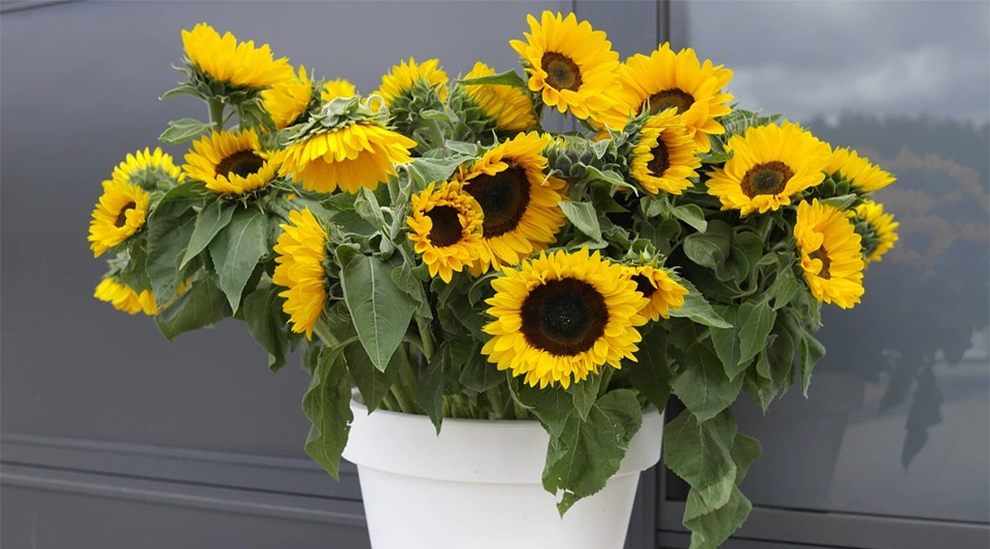
When choosing a location for your sunflower pot, there are a few factors to consider:
- Sunlight: Sunflowers need full sun to grow and thrive, so it’s important to choose a location that receives at least 6-8 hours of direct sunlight per day. Look for a spot in your yard or on your balcony that gets plenty of sun throughout the day.
- Wind protection: Sunflowers can be tall and top-heavy, which makes them vulnerable to wind damage. Choose a location that is protected from strong winds or use a support stake or trellis to help keep the plants upright.
- Space: Sunflowers can grow quite large, so be sure to choose a location that provides ample space for the plants to grow. Avoid planting sunflowers too close together or near other plants that may compete for resources.
- Accessibility: Consider the accessibility of your sunflower pot when choosing a location. Make sure it’s easy to access for watering, pruning, and harvesting.
- Aesthetics: Sunflowers are beautiful plants that can add a pop of color and visual interest to your yard or balcony. Consider the aesthetic appeal of the location you choose and how the sunflowers will complement your existing landscaping or decor.
With the right location and growing conditions, your sunflowers will thrive and provide you with beautiful blooms all season long.
Related: Sunflower Lifespan
Is Growing Sunflowers In Pots Outdoors Different From Growing Sunflowers In Pots Indoors?
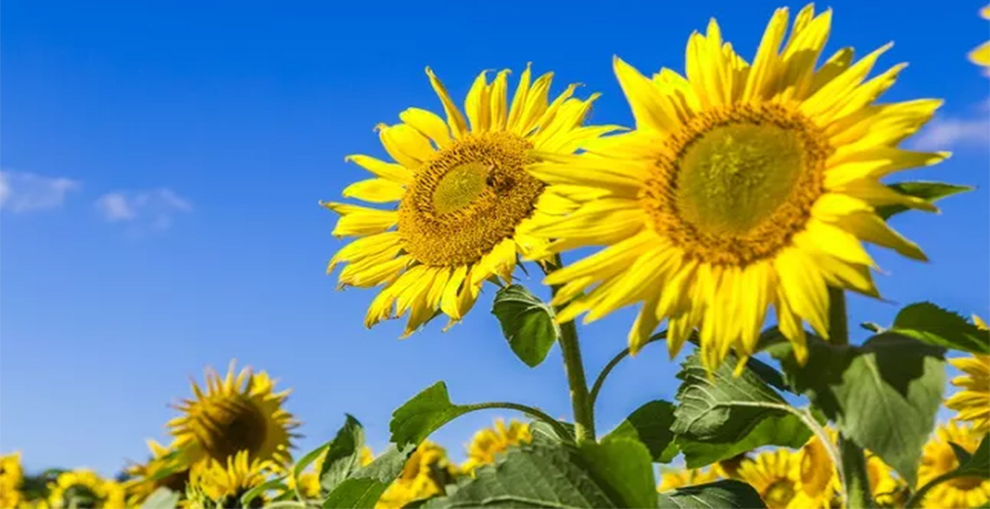
Yes, growing sunflowers in pots outdoors is different from growing sunflowers in pots indoors due to a number of factors such as lighting, temperature, and exposure to the elements.
Indoor sunflowers require more light than outdoor sunflowers because they don’t have access to natural sunlight. You will need to provide artificial light or a very bright window to ensure the plants get enough light to grow properly.
Outdoor sunflowers, on the other hand, will get natural sunlight, but you need to make sure they are in a spot that receives at least six hours of direct sunlight each day.
In terms of temperature, indoor sunflowers prefer warm temperatures between 70-78°F (21-25°C). Outdoor sunflowers, however, can tolerate a wider range of temperatures, but they will not grow well in temperatures below 50°F (10°C) or above 90°F (32°C).
When learning how to plant sunflower in a pot outdoors, you also need to consider exposure to the elements. Sunflowers can be susceptible to wind damage, and pots may need to be staked or placed in a sheltered area to prevent tipping over.
Additionally, outdoor sunflowers may be at risk of being eaten by pests such as birds or squirrels, so you may need to take measures to protect the plants.
How To Care For Sunflowers In A Pot?
Let us look at the care guide that can help you with the care instructions for your sunflowers.
| Soil | Well-draining soil rich in organic matter |
| Sun | At least 6-8 hours of sunlight each day |
| Water | Regular and consistent watering is needed by sunflowers |
| Temperature | Temperatures between 65°F to 80°F |
| Humidity | Moderate to low humidity levels |
| Pruning | Pruning is not required, but you can remove spent blooms and damaged leaves to encourage healthier growth. |
| Fertilizer | Apply balanced, all-purpose fertilizer every two to three weeks |
| Staking | Tall or heavy sunflower varieties may require staking |
| Pests & Diseases Protection | Spray your sunflower with a mixture of water and dish soap, using copper fungicides, and keep the area around the plant free of weeds and debris. |
